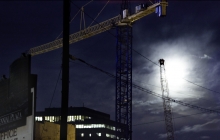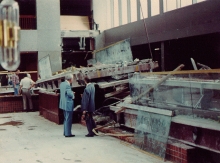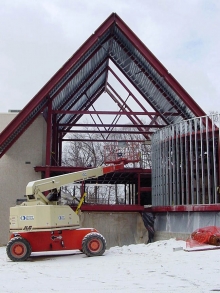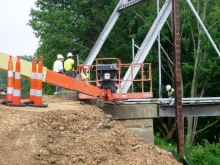To maintain a project's schedule, productivity, and ultimately, profitability, it is imperative that the job foreman and the office project manager and/or estimator are aware of weather and site conditions.† During this time of the year, material delivery becomes an extremely important part of maintaining project schedules and minimizing surprises.
Specifiers tend to create their products based on what manufacturers tell them.† This is not a bad idea; after all, no one has the time to research all the products used on site.† Manufacturers will indicate that their materials need to be pre-conditioned to the interior temperature for a period of time, usually 24 hours prior to installation.† The standard temperature is typically between 55 degrees Fahrenheit and 70 degrees Fahrenheit.




